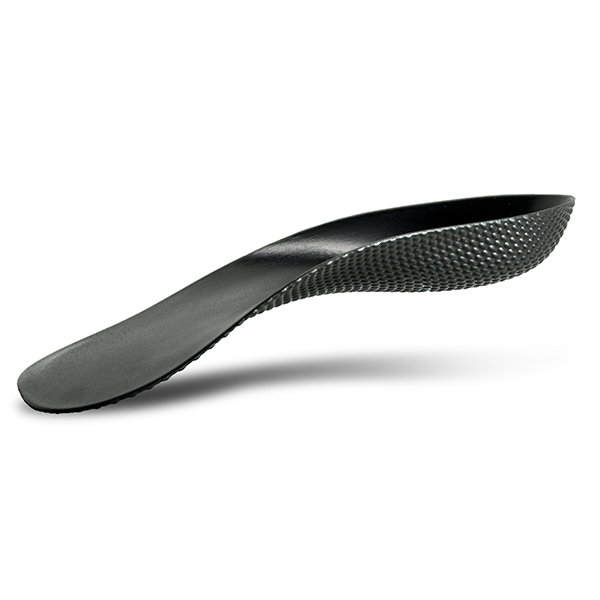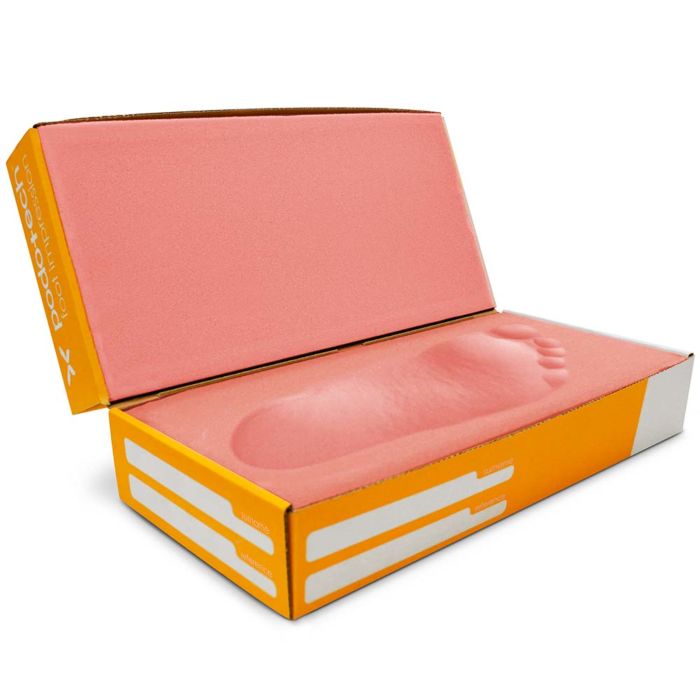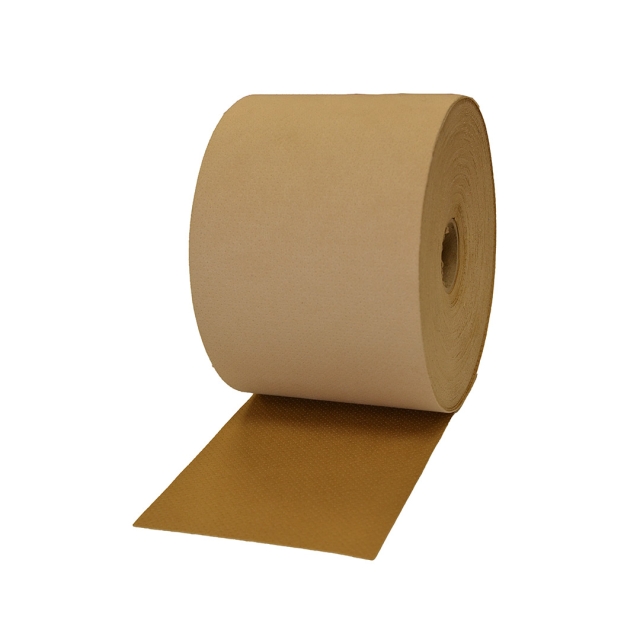A guide to creating the most effective orthotics

Foot orthotics have been used in the redistribution of pressure, pain relief and restoration of foot function for over two thousand years, making it one of the oldest areas of healthcare. Medical and technological advancements have meant that, now more than ever, the use of orthotics to help bolster the biomechanics of the lower limb is effective to treat a wide variety of conditions including arthritis, plantar fasciitis, heel spurs and back pain.
In principle, the use of custom-made foot orthotics allows clinicians to provide a more accurate device to better treat patients, however this depends on the materials and methods used, as well as cost and manufacturing time. Staff shortages within O&P roles, as well as funding cuts, means that orthotists and workshop managers need to use the most cost and time effective materials and methods to best serve their patients.

Casting for a foot orthotic
Traditionally, foot impression boxes – particularly phenolic foam boxes – are used as a quick and easy tool to give a negative mould of the patient’s foot which is then turned into a positive impression using plaster of Paris. However, thanks to advancements in 3D printing, technology like the cloud-based Voxelcare CAD/CAM system have been growing in popularity. The ability to quickly and accurately scan and analyse a patient’s foot, including areas of pressure offloading, allows clinicians to streamline workflow, save money and cut down waiting times.
Choosing the best materials for your patient
As lower limb care specialists, we stock a whole range of materials for the creation of foot orthotics. The right materials depend on the method of manufacture as well as your patient’s needs.
Ethylene Vinyl Acetate is an excellent material for creating orthotics, particularly to aid flat feet and diabetic and arthritic conditions that benefit from a softer material. As one of the most commonly used material in orthotic production, EVA comes in a range of densities to suit the needs of the patient, is lightweight, shock absorbing and heat reflective and hardwearing, retaining its shape over time.
EVA can be used as a base or covering material, and certain varieties – like the Aortha EVA CAD/CAM Blocks - are also available in an Easy Mill option, manufactured from a finer grain of EVA that produces a more easily removed

Another popular material in the production of robust orthoses is copolymer polypropylene (PPC), liked for its ability to yield pressure and torque whilst retaining its form. The Aortha PPC Orthotic Blanks are space, cost, waste, and time saving, boasting a higher level of ductility than previous PPC materials.
Algeos XT Carbon range of materials have a unique resin formula that are fantastic for conditions which require a lot of control. They offer great shock absorption and can help in the prevention of injuries relating to sports and walking/hiking.
Finishing materials
Finishing materials don’t just help to improve the appearance of the orthotic, they also seal in pads, coverings and extensions and aid in shock absorption. It is important to consider the patient’s needs when choosing a covering material, as well as their lifestyle and preferences. One material that is taking the market by storm is the Aortha Leather-Tec covering, a new microfibre lining material that looks and feels like real leather, whilst having many of the advanced properties of modern synthetic materials. With an absorption capacity of eight times its weight in water, Leather-Tec is 100% breathable, hypo-allergenic, anti-bacterial and anti-microbial. Given its base material is polyester, Leather-Tec is also recyclable and more environmentally friendly than its competitors, making it a great choice for a wide range of orthoses.
Choosing the right materials is essential to creating bespoke, effective orthotics. As lower-limb care specialists, we have a wide range of materials to suit yours and your patient’s needs. To speak to one of our materials experts about our full range, please contact us.




